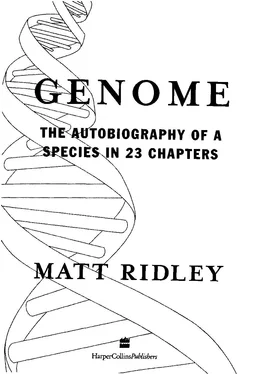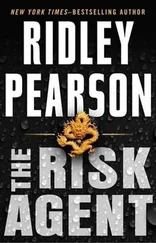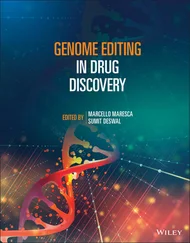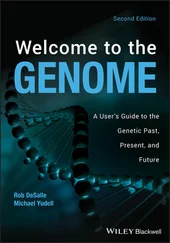Genome - Matt Ridley
Здесь есть возможность читать онлайн «Genome - Matt Ridley» — ознакомительный отрывок электронной книги совершенно бесплатно, а после прочтения отрывка купить полную версию. В некоторых случаях можно слушать аудио, скачать через торрент в формате fb2 и присутствует краткое содержание. Жанр: Старинная литература, на английском языке. Описание произведения, (предисловие) а так же отзывы посетителей доступны на портале библиотеки ЛибКат.
- Название:Matt Ridley
- Автор:
- Жанр:
- Год:неизвестен
- ISBN:нет данных
- Рейтинг книги:5 / 5. Голосов: 1
-
Избранное:Добавить в избранное
- Отзывы:
-
Ваша оценка:
- 100
- 1
- 2
- 3
- 4
- 5
Matt Ridley: краткое содержание, описание и аннотация
Предлагаем к чтению аннотацию, описание, краткое содержание или предисловие (зависит от того, что написал сам автор книги «Matt Ridley»). Если вы не нашли необходимую информацию о книге — напишите в комментариях, мы постараемся отыскать её.
Matt Ridley — читать онлайн ознакомительный отрывок
Ниже представлен текст книги, разбитый по страницам. Система сохранения места последней прочитанной страницы, позволяет с удобством читать онлайн бесплатно книгу «Matt Ridley», без необходимости каждый раз заново искать на чём Вы остановились. Поставьте закладку, и сможете в любой момент перейти на страницу, на которой закончили чтение.
Интервал:
Закладка:
Another sign of trouble that alerts p53 is if the cell starts to run 2 3 8 G E N O M E
short of oxygen, which is a diagnostic feature of tumour cells. Inside a growing ball of cancer cells, the blood supply can run short, so the cells begin to suffocate. Malignant cancers get over this problem by sending out a signal to the body to grow new arteries into the tumour - the characteristic, crab-claw-like arteries that first gave cancer its Greek name. Some of the most promising new cancer drugs block this process of 'angiogenesis', or blood-vessel formation.
But P53 sometimes realises what is happening and kills the tumour cells before the blood supply arrives. Cancers in tissues with poor blood supply, such as skin cancers, therefore must disable TP53 early in their development or fail to grow. That is why melanomas are so dangerous.
Little wonder that p53 has earned the nickname 'Guardian of the Genome', or even 'Guardian Angel of the Genome'. TP53 seems to encode the greater good, like a suicide pill in the mouth of a soldier that dissolves only when it detects evidence that he is about to mutiny. The suicide of cells in this way is known as apoptosis, from the Greek for the fall of autumn leaves. It is the most important of the body's weapons against cancer, the last line of defence. Indeed, so important is apoptosis that it is gradually becoming clear that almost all therapeutic cancer treatment works only because it induces apoptosis by alerting p53 and its colleagues. It used to be thought that radiation therapy and chemotherapy worked because they pref-erentially killed dividing cells by damaging their D N A as it was being copied. But if that is the case, why do some tumours respond so poorly to treatment? There comes a point in the progression of fatal cancer when the treatment no longer works - the tumour no longer shrinks under chemical or radiation attack. Why should this be? If the treatment kills dividing cells, it should continue to work at all times.
Scott Lowe, working at Cold Spring Harbor Laboratory, has an ingenious answer. These treatments do indeed cause a little D N A damage, he says, but not enough to kill the cells. Instead, the D N A damage is just sufficient to alert p53, which tells the cells to commit suicide. So chemotherapy and radiation therapy are actually, like D E A T H 239
vaccination, treatments that work by helping the body to help itself.
The evidence for Lowe's theory is good. Radiation, or treatment with 5 -fluorouracil, etoposide or adriamycin - three chemical cancer treatments - all encourage apoptosis in laboratory cells infected with a viral oncogene. And when hitherto tractable tumours relapse and suddenly fail to respond to treatment, the change correlates closely with a mutation knocking out TP53. Likewise, the most intractable tumours - melanoma, lung, colorectal, bladder and prostate - are the ones in which TP53 is usually mutated already. Certain kinds of breast cancer resist treatment: the ones in which TP53 is broken.
These insights are of great importance to the treatment of cancer.
A major branch of medicine has been acting under a large misappre-hension. Instead of looking for agents that kill dividing cells, doctors should have been looking for agents that encourage cell suicide.
That does not mean chemotherapy has been wholly ineffective, but it has been effective only by accident. Now that medical research knows what it is doing, the results should be more promising. In the short term it promises a less painful death for many cancer patients. By testing to see if TP53 is already broken, doctors should soon be able to tell in advance if chemotherapy will work. If it will not, then the patient and his or her family can be spared the suffering and false hope that is now such a feature of the last months of life for such people.7
Oncogenes, in the unmutated state, are needed for cells to grow and proliferate normally throughout life: skin must be replaced, new blood cells generated, wounds repaired and so on. The mechanism for suppressing potential cancers must allow exceptions for normal growth and proliferation. Cells must frequently be given permission to divide, and must be equipped with genes that encourage division, so long as they stop at the right moment. How this feat is achieved is beginning to become clear. If we were looking at a man-made thing, we would conclude that a fiendishly ingenious mind must be behind it.
Once again, the key is apoptosis. Oncogenes are genes that cause division and growth but, surprisingly, several of them also trigger 2 4 0 G E N O M E
cell death. In the case of one such gene, known as MYC, both division and death are triggered by the gene, but its death signal is temporarily suppressed by external factors called survival signals.
When these survival signals run out, death takes over. It is as if the designer, aware of MYC's capacity to run amok, has automatically booby-trapped it so that any cell which gets carried away kills itself as soon as the supply of survival factors expires. The ingenious designer has gone a step further, by tying together three different oncogenes, MYC, BCL-2 and RAS, so that they control each other.
Normal cell growth can only occur if all three are working properly.
In the words of the scientists who discovered these connections:
'Without such support, booby traps spring and the affected cell is either killed or rendered moribund - either way, it is no longer a
[cancerous] threat.'
The story of p53 and the oncogenes, like much of my book, challenges the argument that genetic research is necessarily dangerous and should be curtailed. The story also strongly challenges the view that 'reductionist' science, which takes systems apart to understand them, is flawed and futile. Oncology, the medical study of whole cancers, diligent, brilliant and massively endowed though it was, achieved terribly little by comparison with what has already been achieved in a few years by a reductionist, genetic approach.
Indeed, one of the first calls for the complete sequencing of the human genome came from the Italian Nobel prize-winner Renato Dulbecco in 1986 because, he argued, it was the only way to win the war on cancer. There is now, for the first time in human history, a real prospect of a genuine cure for cancer, the cruellest and most common killer of all in the west, and it has come from reductionist, genetic research and the understanding that this brings. Those who would damn the whole science as dangerous should remember that.9
Natural selection, once she has selected a method of solving one problem, frequently uses it to solve another. Apoptosis has other functions than the elimination of cancer cells. It is also useful in the fight against ordinary infectious disease. If a cell detects that it has been infected with a virus, it can kill itself for the good of the D E A T H 2 4 1
body as a whole (ants and bees may do this as well, for the good of their colonies). There is good evidence that some cells do indeed do exactly this. There is also, inevitably, evidence that some viruses have evolved a way of preventing this from happening. Epstein¬
Barr virus, the cause of glandular fever or mononucleosis, contains a latent membrane protein whose job seems to be to head off any tendency the infected cell shows to commit suicide. Human papil-loma virus, cause of cervical cancer, has two genes aboard whose job is to switch off TP53 and another tumour-suppressor gene.
As I mentioned in the chapter on chromosome 4, Huntington's disease consists of unplanned and excessive apoptosis of brain cells which cannot then be replaced. Neurons cannot be regenerated in the adult brain - which is why some brain damage is irreversible.
Читать дальшеИнтервал:
Закладка:
Похожие книги на «Matt Ridley»
Представляем Вашему вниманию похожие книги на «Matt Ridley» списком для выбора. Мы отобрали схожую по названию и смыслу литературу в надежде предоставить читателям больше вариантов отыскать новые, интересные, ещё непрочитанные произведения.
Обсуждение, отзывы о книге «Matt Ridley» и просто собственные мнения читателей. Оставьте ваши комментарии, напишите, что Вы думаете о произведении, его смысле или главных героях. Укажите что конкретно понравилось, а что нет, и почему Вы так считаете.












